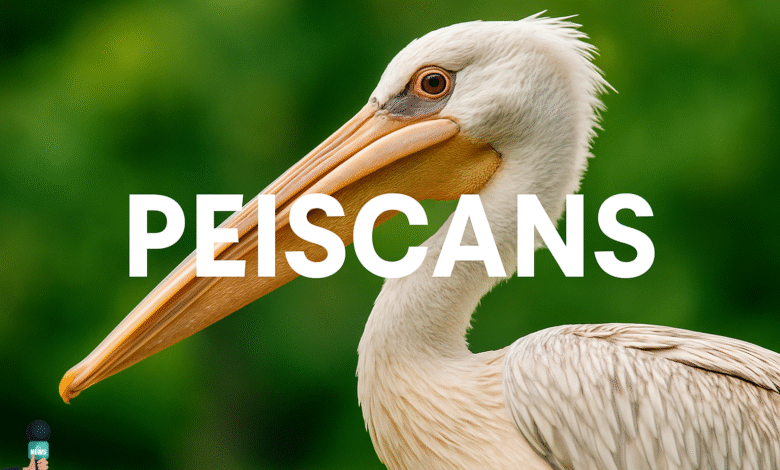Peiscans Uncovered: Traits, Habits, and Why They Matter Today

Peiscans are captivating aquatic beings that have recently sparked curiosity among researchers, nature enthusiasts, and bloggers alike.
Often mistaken for myth or folklore, Peiscans are gaining attention for their unique behavioral patterns, environmental influence, and biological characteristics.
These aquatic creatures inhabit deep and secluded water ecosystems, often blending into their natural habitats so effectively that many remain unaware of their presence.
Their study offers a new perspective into marine evolution, symbiotic relationships, and environmental preservation.
As digital discovery expands and keyword trends shift toward lesser-known species, Peiscans are quickly climbing the SEO ladder as a subject of niche interest.
Understanding them can drive not only scientific interest but also help content creators, educators, and environmentalists deliver more nuanced storytelling.
Peiscans thrive in harmony with their environment, displaying adaptability that surpasses many known marine creatures.
They often exhibit highly intelligent behaviors—working in groups, communicating using wave-pulse signals, and showing responses to threats and food sources.
From a structural standpoint, they possess a blend of biological traits common in both fish and amphibious organisms.
This hybrid evolution has led to increasing debates in marine biology circles about whether they belong to a newly evolving class.
What’s more, Peiscans exhibit rare color-morphing abilities, a trait that protects them from predators and aids in ambush-style feeding.
Due to their reclusive nature, most data about Peiscans comes from deep-sea explorations and advanced underwater imaging technologies.
However, the digital buzz surrounding them makes it crucial for bloggers and educational platforms to explore Peiscans from every angle.
Understanding Peiscan Behavior and Ecology
One of the most remarkable aspects of Peiscans is their adaptability to changing aquatic conditions.
They can survive in both saltwater and brackish environments, making them versatile survivors.
Researchers have observed that Peiscans modify their migratory paths in response to seasonal water temperature changes.
This type of instinct-driven migration is rare and signifies high levels of environmental awareness.
Interestingly, Peiscans also build simple nesting structures to shield their eggs—showcasing an advanced level of parental instinct not commonly observed in aquatic species.
The Peiscan diet consists of small crustaceans, plankton, and occasionally, smaller fish.
Their hunting methods are tactical; they rely on silent, stealth-based approaches rather than speed or force.
This makes them excellent case studies in marine behavioral psychology.
On a broader level, their presence in marine ecosystems helps maintain a balance by naturally managing plankton populations.
As climate change continues to impact ocean temperatures and biodiversity, the study of Peiscans could unlock strategies to support other vulnerable aquatic species.
The rising trend of searches related to “Peiscans” on platforms like Google and Bing reveals growing public interest.
This is a golden opportunity for bloggers, SEO strategists, and environmental educators to create high-ranking content.
With a mix of biology, ecology, and keyword strategy, Peiscans can anchor a long-tail SEO strategy that brings in niche traffic.
Writing detailed articles, infographics, and explainer videos on Peiscans can generate backlinks from educational and scientific domains.
In a world driven by content, choosing a topic like Peiscans—one that’s ripe but underexplored—is a powerful SEO move.
FAQs About Peiscans
Q1: What exactly are Peiscans?
Peiscans are aquatic creatures known for their hybrid features that resemble both fish and amphibians. They are unique and rare in the marine world.
Q2: Where are Peiscans usually found?
They are often found in deep-sea environments and brackish waters where few predators exist, making them elusive and hard to study.
Q3: Are Peiscans real or mythical?
Peiscans are real biological entities. Although they may sound fictional, increasing marine research confirms their existence.
Q4: Why are Peiscans important to marine ecosystems?
They help maintain ecological balance by controlling populations of smaller marine organisms like plankton and crustaceans.
Q5: How can I learn more about Peiscans?
Scientific journals, oceanographic research platforms, and niche wildlife blogs are excellent sources for in-depth knowledge on Peiscans.
Q6: Do Peiscans pose any threat to humans?
No, Peiscans are non-aggressive and shy. They typically avoid human contact and pose no threat.
Q7: Can Peiscans be kept in aquariums?
Due to their specific habitat requirements and deep-sea nature, they are not suitable for aquariums or home environments.
Q8: Are Peiscans endangered?
Because of their low visibility and limited research, their conservation status remains unclear. However, habitat disruption may pose future risks.
Conclusion
Peiscans represent one of the most intriguing subjects in modern marine biology.
Their mysterious nature, adaptive behavior, and ecological contributions make them a topic worth exploring in depth.
For SEO experts, bloggers, and educators, the keyword “Peiscans” opens up new pathways to generate highly engaging, traffic-driving content.
With limited yet growing information available, creating content around Peiscans’s not only enhances your site’s authority but also contributes to spreading awareness about lesser-known species.
Whether you’re fascinated by marine creatures, building niche authority, or riding emerging search trends—Peiscans offer a golden opportunity to make an impact.




